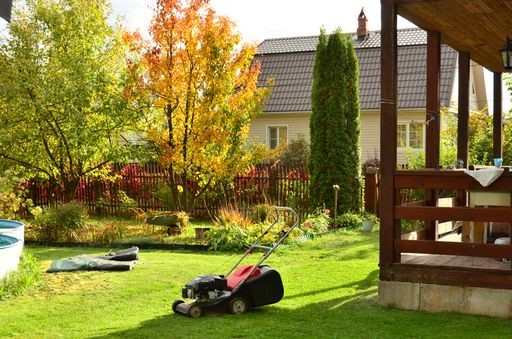
9 Tips to Get Your Outdoor Power Equipment Ready for Winter Storage
Fall is a busy season in the yard for home owners, especially those trying to sell. After the lawn gets its last cut before winter, it will be time to put away spring and summer outdoor power equipment, like lawn mowers, leaf blowers, chain saws, and trimmers. And you will need to get snow throwers, generators and other small engine equipment out and ready for winter use.
The Outdoor Power Equipment Institute (OPEI) offers tips to help home and business owners prepare for upcoming seasonal changes.
“Doing good maintenance in the fall means that your lawn mower will be in ready when spring arrives and you are eager to tackle landscaping projects,” said Kris Kiser, President and CEO of OPEI. “As you get ready for winter, now is also the time to do snow thrower and generator maintenance. You should also review safe handling procedures so you know how to use your equipment and are ready when snow falls.”
Here’s a few tips to help:

Review your owner’s manual for your equipment. Re-familiarize yourself with how to handle your equipment safely and any maintenance needs. If you lost your manual, you can usually find it online. Save a copy on your computer if possible, so you can consult it when needed.
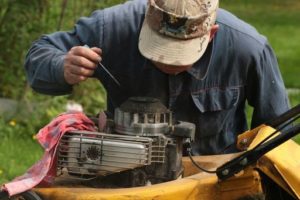
Service all of your equipment. Before storing equipment, you won’t need during the winter months, clean and service it yourself or take it to a small engine repair shop. Drain and change engine oil and dispose of old oil safely. Service the air filter, and do other maintenance activities as directed by your service manual. Check all winter equipment and see what maintenance and repairs are required.
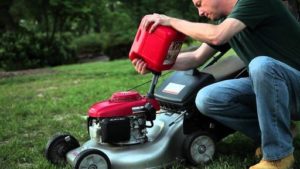
Handle fuel properly. Unused gas left in gas tanks over the winter can go stale. It can even damage your equipment. For equipment you’ll store, add fuel stabilizer to the gas tank, then run the equipment to distribute it. Turn the engine off, allow the machine to cool, then restart and run until the equipment until the gas tank is empty. For winter equipment, be sure you know what fuel your manufacturer recommends be used. Most outdoor power equipment is designed, built and warranted to run on ten percent or less ethanol fuel.
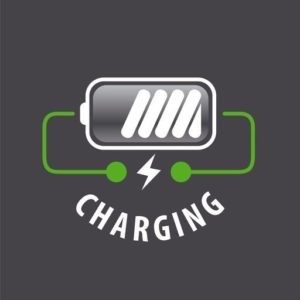
Charge the battery. If your equipment has a battery, remove and fully charge it before storing. It’s important batteries not be stored on metal shelves or touching metal objects. Store the battery on a plastic or wood shelf in a climate-controlled structure.

Shelter your equipment from winter weather. Store your spring and summer equipment in a clean and dry place such as a garage, barn or shed. Winter equipment should be kept away from the elements, but be easily available for use when needed. Always keep your outdoor power equipment out of the reach of children and pets.

Do a yard cleanup. Clear the paths you use regularly in your yard, especially during the winter, and put away warm weather items. Make space in your garage or basement before the weather changes, so you have room to store larger yard items, like patio furniture, umbrellas, and summer toys.
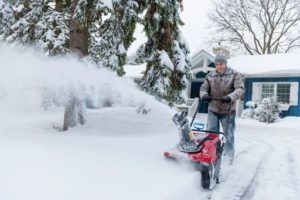
If you are getting out winter equipment, such as a generator or snow thrower, review safe handling procedures. Familiarize yourself with your equipment and make sure you know how to turn on and off the machine and how to use the equipment safely.
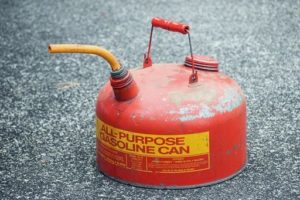
Find and prepare to fill your gas can. Buy the type of fuel recommended by your equipment manufacturer no more than 30 days before you will use it. You should use fuel with no more than 10% ethanol in outdoor power equipment. Also, fuel goes stale and will need to be replaced if you have not used it within a month. Use a fuel stabilizer if recommended by your manufacturer.
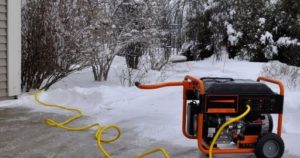
Have the right weather appropriate extension cord for your generator. Keep heavy duty weather proof extension cords on hand to use with your generator.
Get more information at OPEI.org.
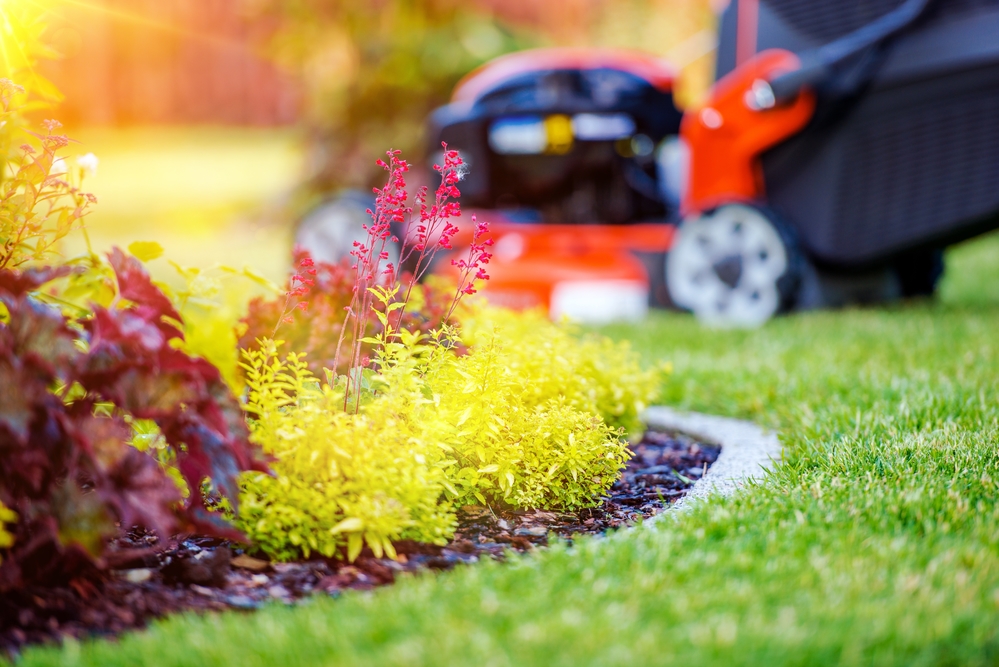
Tips to Ready the Yard for Fall Showings & Enjoyment
Every year The Outdoor Power Equipment Institute (OPEI) provides tips and reminders to help families and backyard enthusiasts stay safe when using outdoor power equipment. This year is different, reports OPEI, as the world experiences a paradigm shift in how we live our everyday lives.
“Due to the pandemic, we are all re-discovering the importance of connecting to the outdoors. We’re seeing record sales in yard and garden equipment and supplies, and more interest in working and living surrounded by green space,” says Kris Kiser, President of OPEI and the TurfMutt Foundation, which directs the TurfMutt environmental education and stewardship program. “People want their own section of the outdoors, and they see how a yard can both keep us safe and help us connect with one another.”
For over a decade, TurfMutt has advocated the importance of managed landscapes and other green space as critical to human health and happiness, and to promote good environmental stewardship of those spaces.
“Your patch of grass outside your back door is not only a safe space for you, your family and pets, but it’s also part of the larger ecosystem,” he says. “By taking care of our personal green spaces, we are taking care of the planet.”
Here are a few tips from Mutt Mulligan, a rescue dog and the spokesdog of the TurfMutt Foundation, to get your yard ready for fall and winter, whether you are showing your house to potential buyers or sprucing it up to enjoy yourself.
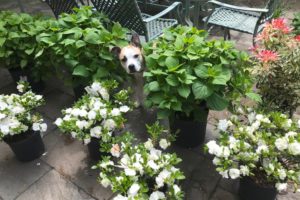
Be purposeful in how you maintain your landscape. Many people are sprucing up their yards for fall showings and entertaining by adding trees and shrubs. If adding a tree or bush, consider location, maintenance, sunlight and watering needs, as well as how it might support local pollinators in the spring and backyard wildlife over the winter.

Plan how to manage leaves. Mulching leaves and leaving them on the grass – rather than raking and bagging them – is good for the lawn and the environment. As shredded leaves decompose, they feed it naturally. If you need a mulching attachment or want a mulching mower, now is the time to shop.
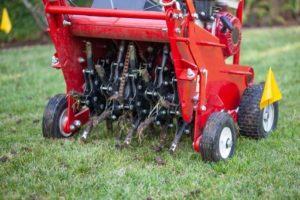
Keep your lawn healthy by aerating it. Aeration prevents soil from becoming compacted and covered with thatch, a thick layer of roots, stems, and debris that blocks water, oxygen and nutrients from reaching the soil.
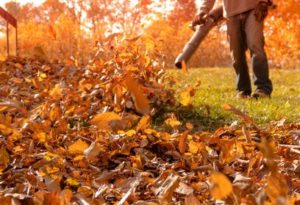
Get out equipment and assess your needs for fall yard work. Clean and inspect your mower, trimmer, leaf blower, pruner, or hedger. Get out attachments needed for fall like an aerator or mulching attachment. Take any equipment that needs it to an authorized service representative.
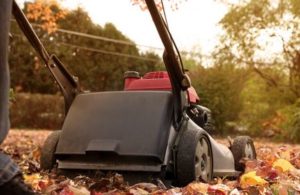
Continue to mow during the fall season. You should cut the grass until the first hard frost. Find the just-right length for your yard’s species, typically between 2-3 inches, to keep the grass healthy when it turns cold.

Check if trees or bushes need pruning. Look for low-hanging branches that might snap or break in the winter and cause damage. Now is the time to trim them. Call a tree service if needed.
To learn more visit OPEI.org.

Busting 4 Myths About a Big Yard as Buyers Look for More Space
In the era of the coronavirus pandemic, many buyers are looking for bigger homes with larger yards. After all, the family yard continues to be a safe place for people to go to get outside, breath in fresh air, de-stress, and reconnect with family, friends, and nature. The Outdoor Power Equipment Institute (OPEI) wants to help you sell that property with the big backyard (after all, a bigger lot means a larger commission at closing) and offers these myth-busting responses to buyers who may have concerns about tackling a big yard.
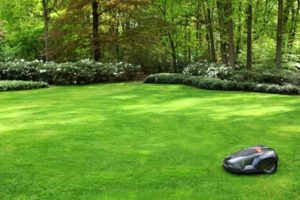
Myth #1: I will have to spend every weekend doing yardwork.The days of dad mowing the lawn every weekend in black socks and Birkenstocks are a thing of the past. Today’s equipment is designed to suit every yard and comes in a variety of power sources, including battery/electric, gasoline, propane, solar, and more. Smart technology has brought us robotic mowers that maintain yards with minimal effort. Some manufacturers are even stretching boundaries to use artificial intelligence when designing equipment.

Myth #2: Having a lawn is bad for the environment. Living landscapes – including grass – offer a host of environmental benefits and give families an opportunity to combat climate change in their own backyard. The ordinary family lawn filters and captures runoff while also cleansing the water of impurities and dust. Grass controls soil erosion through its natural, dense, and fibrous root system. Living landscapes act like nature’s air conditioner, reducing cooling bills inside the home while mitigating the heat island effect caused by hardscape in our urban areas. Living landscapes also improve air quality, sequester carbon, and generate oxygen.
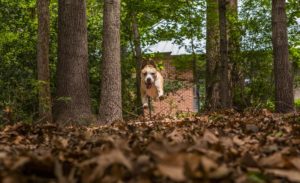
Myth #3: There’s no benefit to having a yard. A yard is not just about aesthetics. It also serves important functions for your family’s health and lifestyle and for the ecosystem as a whole. Living landscapes – including lawns comprised of turfgrass – offer places for children and pets to play and for the entire family to enjoy the outdoors, especially important as we’re all spending more time at home during the pandemic. Numerous studies have shown the benefits of green space to health, including improved mood, lowered stress, increased fitness levels, and more. People who have access to green spaces live longer, according to Harvard researchers. Another a study found that people living on streets with more trees had better heart and metabolic health. (The Living Landscapes Fact Book has even more health and well-being benefits of green space.)
Furthermore, grasses, trees, shrubs and other plant life provide much-needed food and habitat for birds, insects, and small mammals. Choosing the right plants for your climate zone is key to helping native wildlife. To determine the best types of turf, trees, shrubs, and other plants for your location, refer to the USDA Plant Hardiness Zone Map.
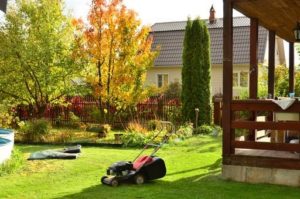
Myth #4: Yards use too much water. It’s actually important not to over-water living landscapes. Plants and trees will grow stronger and work harder – creating deeper, vertical roots – if they need to work to seek water. If you’re not getting rain, water deeply one day a week, preferably in the morning when temps are cooler and evaporation is at a minimum. This will create a healthier, more drought-tolerant lawn. You can also mix native plants into your yard that are appropriate for your climate zone They use less water than non-native species and provide vital habitat to local birds and wildlife.
For more information about the benefits of the living landscape, go to TurfMutt.com.

Six Tips To Keep Pets Safe During Storm Season
While no one is immune from the devastation of a natural disaster, preparing before a storm hits is key to keeping everyone in your family—including your pets—safe. It’s even more important now – in the era of social distancing due to the COVID-19 pandemic – that pet parents have a plan to keep their furry family members out of harm’s way if forced to take shelter elsewhere.
“What’s good for us is good for our pets,” said Kris Kiser, President of The TurfMutt Foundation, an environment education and stewardship program, and President and CEO of the Outdoor Power Equipment Institute (OPEI), an international trade association representing manufacturers and suppliers of power equipment, small engines and battery power, utility and personal transport vehicles, and golf cars, and managing partner of GIE+EXPO. “My dog is a member of the family, so we have a plan for keeping her safe in the event of an emergency, and we encourage all pet parents to do the same.”
Here are six ideas from the TurfMutt Foundation to include pets safety when mapping out a disaster preparedness plan.
Have pets microchipped. In the event of an emergency—natural or otherwise—you want to ensure your pet can get back to you if you’re separated. Collars and ID tags, though important, can break or detach. Microchips—computerized and scannable implants about the size of a grain of rice—are more fool-proof since they’re inserted under your pet’s skin.
Bring pets inside at the first sign of danger. Disasters can be disorienting for pets, and they could run away or hurt themselves reacting to loud noises and strange changes to their landscape. Also, rain, flying debris and high winds pose a danger.
If you have to leave, keep pets with you. Leaving your pets behind during a natural disaster is never a good idea because they could escape or become exposed to a number of life-threatening hazards. Keep them on a leash or in a pet carrier so they don’t escape, even if you are in a “familiar” neighborhood.
Determine where you’ll go. You need a Plan B if you are advised by government officials to leave your home. Due to the COVID-19 pandemic, staying with family or friends may not be an option. Not all emergency shelters will accept pets and physical distancing guidelines may reduce capacity in public shelters. Make a plan and develop a list of pet-friendly hotels open for business and outside your immediate area that you might evacuate to.
Create a pet-friendly resource list. Research a list of veterinarians in the area should your pet need medical care (your regular vet may have some recommendations). Also, figure out which boarding facilities are nearby in case you need to separate from your pet for a time.
Pack an emergency bag. Pack emergency provisions for pest well in advance of a catastrophe so you can evacuate your home quickly if needed. Choose an easy-to-carry bag, label it and keep it where everyone in the family can find it quickly. The bag should include a pet first aid kit; enough food and bottled water for a week (rotate this every couple of months to keep it from going bad); medications (check periodically to ensure medicines in your emergency bag don’t expire); cleanup supplies; food and water dishes; bags (or litter for cats) for collecting waste; an extra collar and leash; photocopies of medical records; towels; recent photos of your pets; and a favorite toy or chewy for comfort. It’s also a good idea to have a sturdy carrier or crate for each pet.
By keeping in mind these ideas, pet preparedness plans can be put into action ahead of a storm instead of spending valuable time trying to determine what needs to be done to best protect pets.
Learn More: For facts, tips and fun activities for families from the TurfMutt environment education and stewardship program, visit TurfMutt.com.
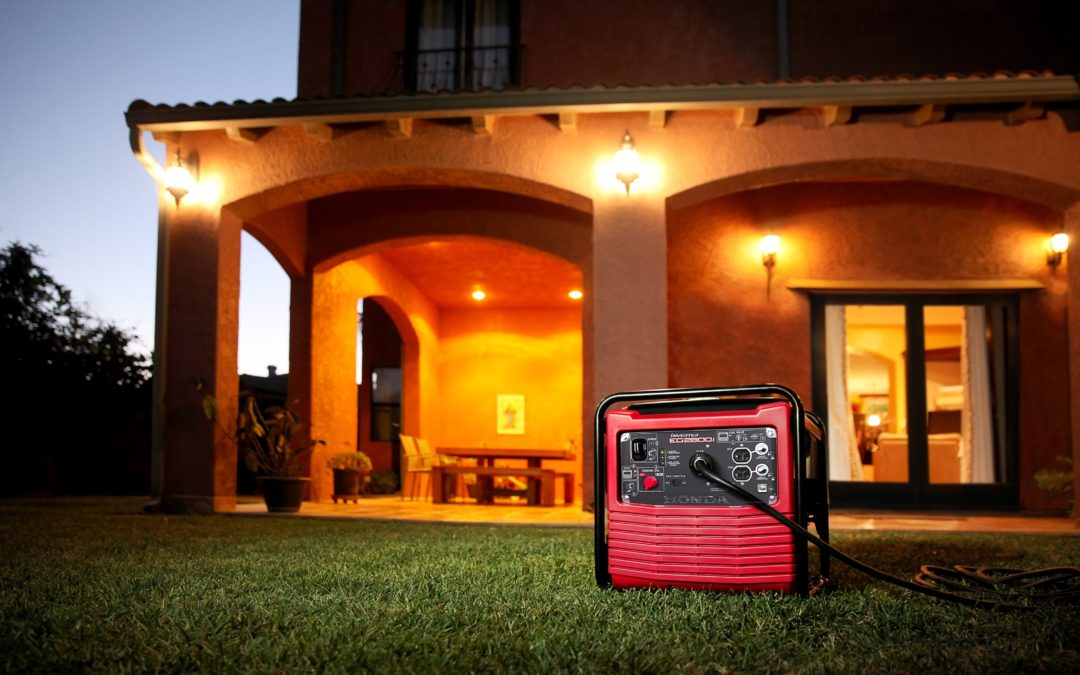
10 Tips to Safely Use Generators
Generators are critical during severe weather events when the power can go out. During summer storm season, the Outdoor Power Equipment Institute (OPEI), an international trade association representing manufacturers and suppliers of power equipment, small engines and battery power, utility and personal transport vehicles, and golf cars, and managing partner of GIE+EXPO, reminds homeowners to keep safety in mind when using generators.
“Not having power when you need it is frustrating, so a generator can provide emergency backup power at a reasonable cost. But, it’s important to follow all manufacturer’s instructions when using one,” said Kris Kiser, President and CEO of OPEI. “For instance, never place a generator in your garage or in your home. The generator should be a safe distance from your home and not near an air intake.”
More tips include:
Take stock of your generator. Make sure equipment is in good working order before you start using it.
Follow all manufacturer’s instructions. Review the owner’s manuals for your equipment if possible (you can look manuals up online if you cannot find them) so you can operate your equipment safely.
Have the right fuel on hand. Use the type of fuel recommended by your generator manufacturer. It is illegal to use any fuel with more than 10% ethanol in outdoor power equipment (for more information on proper fueling for outdoor power equipment visit www.LookBeforeYouPump.com). If you are using fuel that has been sitting in a gas can for more than 30 days and you cannot get fresh fuel, add fuel stabilizer to it. Store gas only in an approved container and away from heat source
Ensure portable generators have plenty of ventilation. Generators should NEVER be used in an enclosed area or placed inside a home or garage, even if the windows or doors are open. Place the generator outside and away from windows, doors, and vents that could allow carbon monoxide to come indoors.
Keep the generator dry. Do not use it in wet conditions. You can cover and vent your generator. You can buy model-specific tents online or generator covers at home centers and hardware stores.
Only add fuel to a cool generator. Before refueling, turn the generator off and let it cool down.
Plug in safely. If you don’t yet have a transfer switch, you can use the outlets on the generator. It’s best to plug in appliances directly to the generator. If you must use an extension cord, it should be heavy-duty and designed for outdoor use. It should be rated (in watts or amps) at least equal to the sum of the connected appliance loads. Make sure the cord is free of cuts. The plug should have all three prongs.
Install a transfer switch. A transfer switch connects the generator to your circuit panel and lets you power hardwired appliances. Most transfer switches also help you avoid overload by displaying wattage usage levels.
Do not use the generator to “backfeed” power into your home electrical system. Trying to power your home’s electrical wiring by “backfeeding” – where you plug the generator into a wall outlet – is reckless and dangerous. You could hurt utility workers and neighbors served by the same transformer. Backfeeding bypasses built-in circuit protection devices, so you could damage your electronics or start an electrical fire.
Install a battery-operated carbon monoxide detector in your home. This alarm will sound if any carbon monoxide comes into the building and alert you.
To learn more visit www.opei.org.
